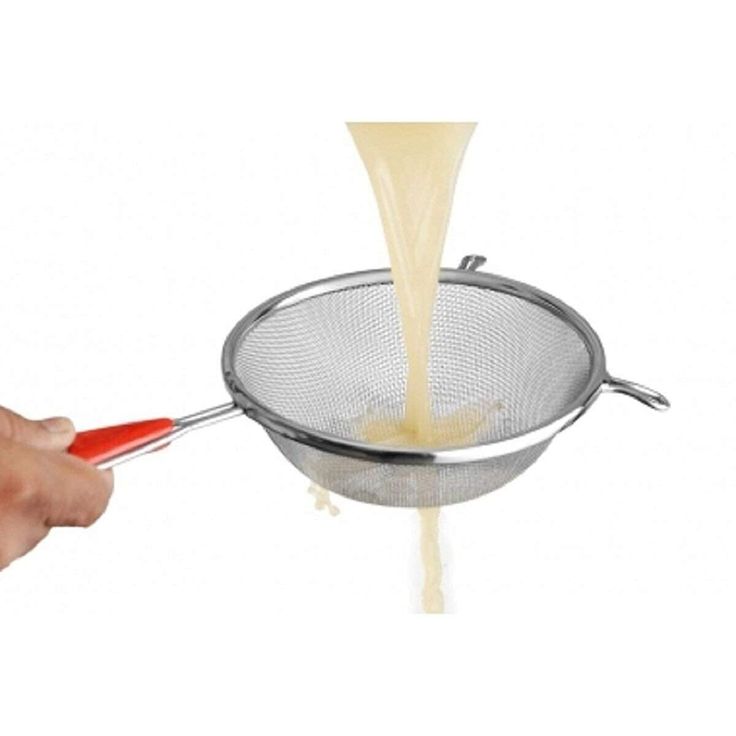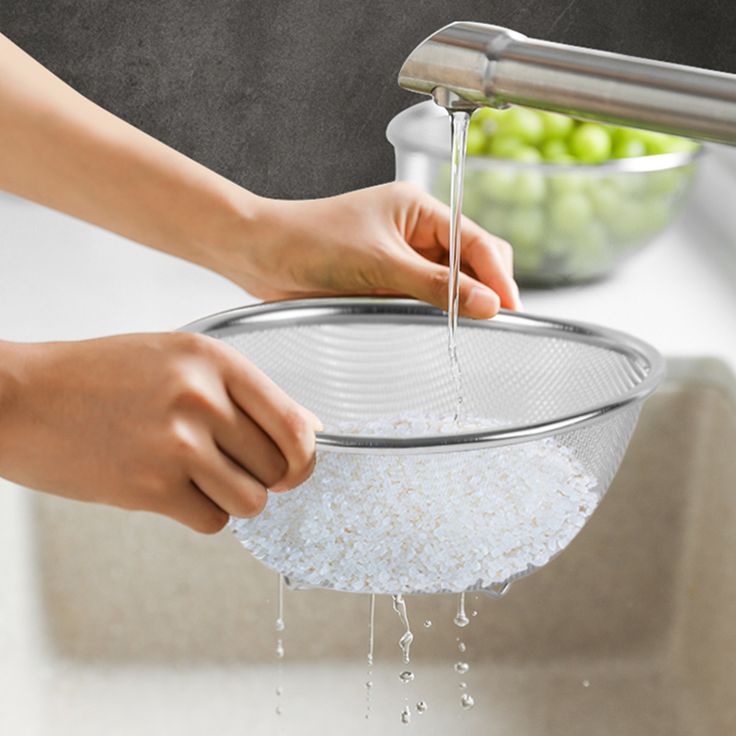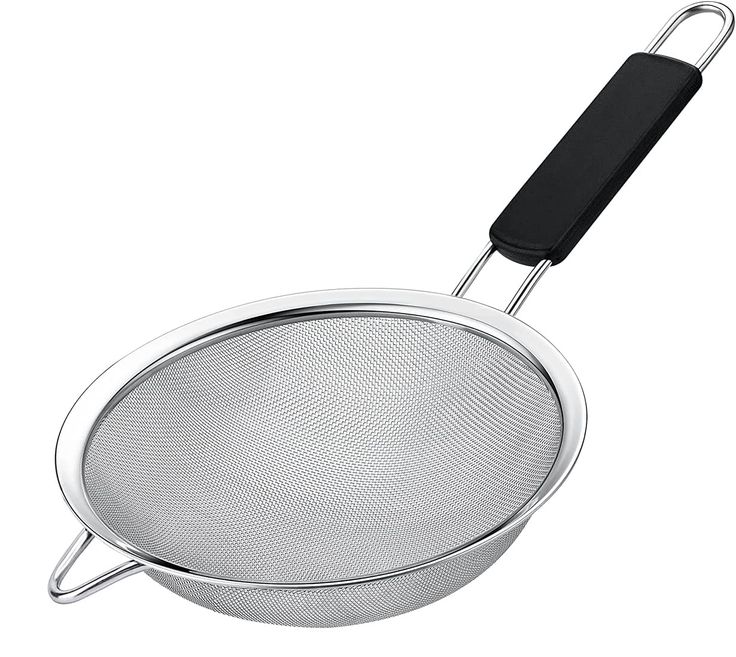If there is one kitchen task that sparks frustration amongst home cooks and even professional chefs, it is cleaning a sieve. Whether you are draining rice, rinsing quinoa, washing small vegetables, or straining pasta, it always ends in the same manner: a clogged mesh, stubborn food bits stuck in the corners, and the agonizing task of poking each hole under a stream of water, to ensure that it is clean. For many people, washing a sieve is the hardest chore in the kitchen. But help is here!
Thanks to the ever-helpful and resourceful world of TikTok, a viral video has showcased a surprisingly simple, efficient, and oddly satisfying method for cleaning your sieve with almost zero effort. This genius trick has captivated kitchen minimalists, messy cooks, and just about anyone who uses a sieve in their kitchen.
This article includes everything you need to know about this brilliant hack, how it works, why it is so effective, and whether it lives up to the hype.

Why Cleaning a Sieve Is So Annoying
Before we dive into the hack, you should understand why cleaning sieves is such a nightmare in the first place. The mesh of sieves is usually tightly woven to catch tiny particles. However, that also means food debris gets lodged between those little gaps.
Rinsing under the tap is a solution. Not really. In most cases, it doesn’t work, especially if you have left the food or food debris sitting for too long. Factor in the awkward shape and narrow rim, and you’ve got yourself a cleaning chore that is as difficult as scrubbing burnt pans.
Even those who are diligent about rinsing immediately after use often find bits of food, such as rice, flour paste, or berry seeds, stubbornly clinging to the wires of the sieve. A lot of us resort to toothbrushes, pressurized water, or even giving up entirely and replacing the sieve more often than we would like to admit.
So when the video demonstrated an effortless way to clean even the dirtiest sieve with almost no scrubbing, people understandably lost their minds. This hack is a lifesaver.
The Sieve-Washing Hack
The following is a step-by-step process of how to clean your sieve:
- Fill a Shallow Bowl or Sink With Hot Water: You want it warm enough to loosen any dried food, but not boiling. Think dishwashing temperature.
- Add Your Dish Soap Generously: A standard dish soap is fine; the foamy kind helps, but it is not essential.
- Place the Dirty Sieve Face Down Into the Water: The mesh side should be submerged with the handle sticking up or leaning against the sink’s side.
- Rub Away: Now for the genius part, use a sponge or dish brush to rub the underside of the mesh. Instead of scrubbing directly on the food side, apply light pressure on the reverse side of the sieve. This will help to dislodge the debris from the opposite direction. Doing this is way more effective than trying to poke food particles through from the front.
- Rinse and Repeat if Necessary: In most cases, one or two swipes are enough. For stubborn debris, a quick soak and another reverse scrub will do the trick.
The easiest way to unclog a mesh is to push out, not in.

Why It Works So Well
Let’s get a little nerdy for a second.
When you rinse a sieve from the food-facing side, you’re pushing debris further into the mesh or jamming it into the corners. The more you scrub from the top, the more compacted the stuck debris becomes. But by flipping it over and scrubbing from underneath, you are pushing the food back out the way it came in. It is the mesh equivalent of cleaning a cheese grater from the back, rather than scraping against the blades.
This reverse-pressure method will dislodge particles with significantly less effort, and when combined with the soapy soak, it will soften hardened residue, making the mesh practically self-cleaning.
We Put It to the Test: Does It Really Work?
We decided to run our own experiment. We tested this sieve hack against three types of food messes:
- Cooked rice, the clingy kind that sticks to every hole
- Quinoa, tiny grains that love to wedge themselves deep in the mesh
- Flour paste. We used the sieve as a strainer for the paste
Test 1: Cooked Rice
After letting the rice sit and dry for an hour, we created a realistic mess. We then soaked the sieve for 10 minutes in warm, soapy water. Then we gently rubbed the underside of the mesh with a sponge. To our delight, the rice bits popped right off with minimal effort. No toothbrush needed!
Test 2: Quinoa
This one was trickier, as quinoa is notorious for jamming the mesh. We soaked for 15 minutes, then did the reverse-scrub trick mentioned earlier. Most of the grains came out right away. For the few stubborn ones, we used the corner of the sponge and did the process all over again. Still, it took a fraction of the time and stress we are used to with cleaning sieves.
Test 3: Flour Paste
Flour and water make glue, and this was the actual challenge. After soaking for 20 minutes, we reverse scrubbed with a dish brush. We were shocked at how easily the paste came loose. A quick rinse, and it looked like new.
Note: If you let the mess sit for too long, even overnight, this method may become quite stressful. But for regular day-to-day use? It is a game-changer.

Maximizing the Hack
You can add a few more tricks to make this hack even better:
- Use a soft-bristled dish brush or sponge with a textured surface. You don’t need to scrub hard, just give the underside a good back-and-forth motion.
- Add a splash of vinegar to the soak. This will be especially helpful if you are dealing with flour or egg residue. Vinegar cuts through protein and starch buildup.
- Don’t wait too long. The fresher the mess, the easier it comes off. If you can’t wash immediately, just toss the sieve in a soapy bowl of water and let it sit there until you are ready.
- For metal mesh, avoid steel wool or abrasive scrubbers. These can cause the mesh to fray or warp. Use softer tools to keep your sieve in good condition.
Why This Hack Feels So Satisfying
This hack taps into that deep human craving for simple solutions to annoying problems. Watching food debris lift away cleanly from the mesh with one gentle swipe is not only effective but also oddly therapeutic.
The best hacks don’t just solve problems; they change the way you think about everyday objects. This one reminds us that sometimes the solution is not more effort, but rather a smarter approach.
Should You Try It?
Absolutely! Whether you are a meal-prepper with multiple strainers in rotation, a parent doing a million dishes a day, or someone who just really hates scrubbing tight corners, this is a hack worth adding to your kitchen arsenal.
Simple, smart, and satisfying, so next time you are tempted to chuck your dirty sieve in the “too annoying to deal with” pile, remember this trick. Flip it, soak it, scrub from the back, and bask in the joy of a perfectly clean mesh with minimal effort.
